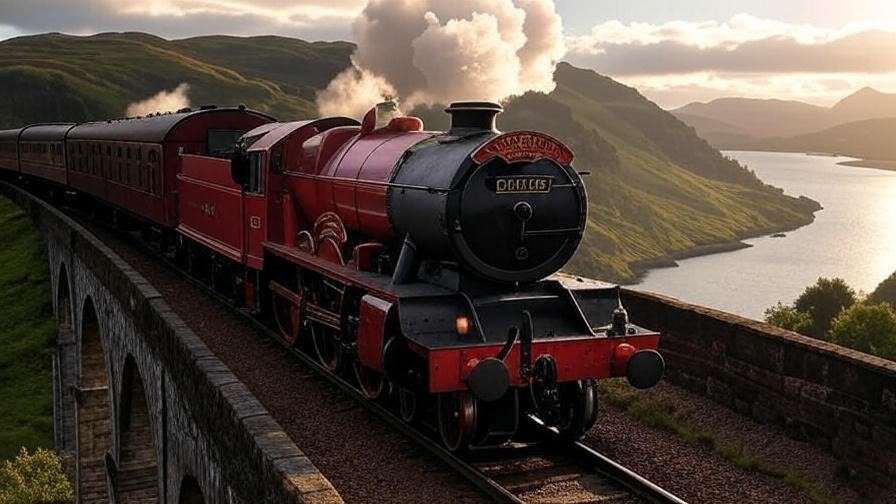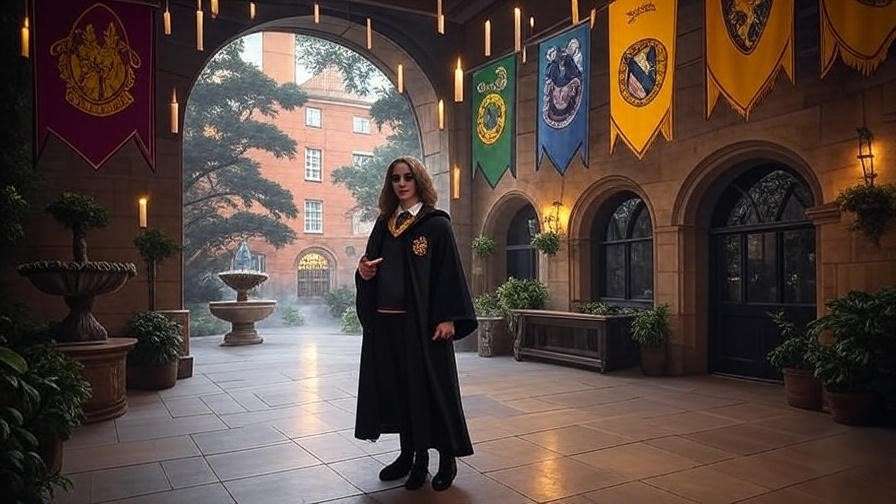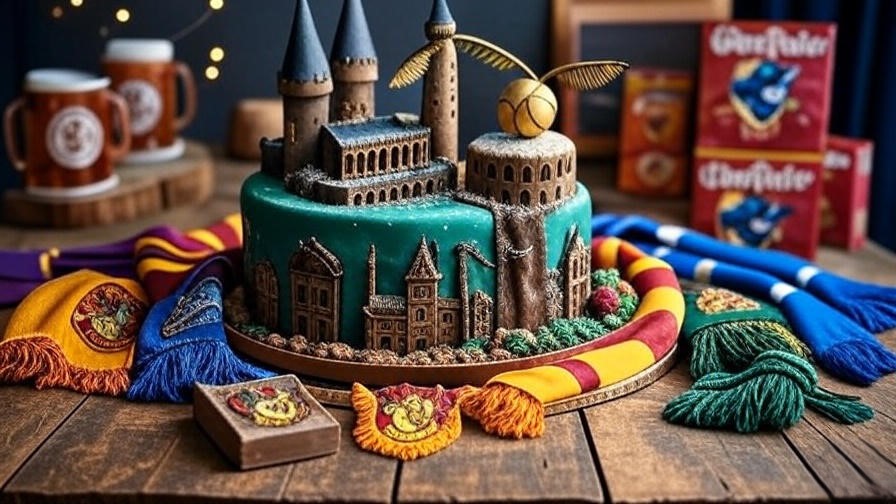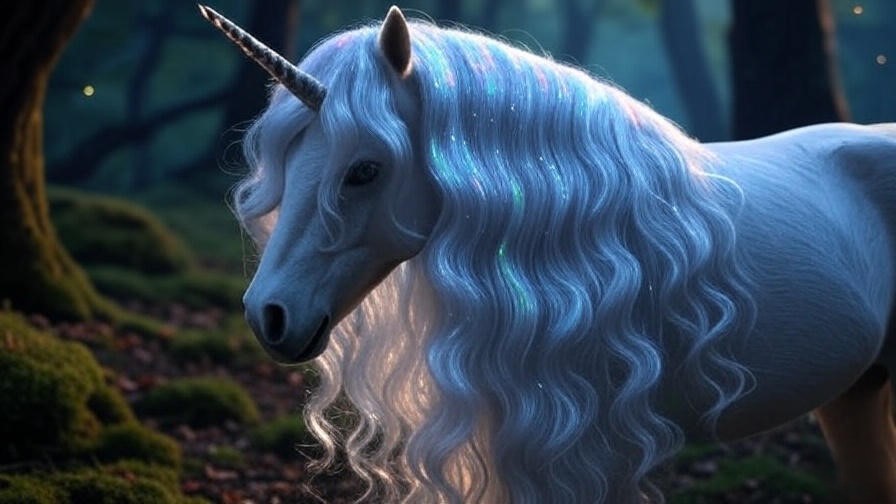Imagine the scarlet steam engine chugging through misty Scottish highlands, its whistle echoing as it carries young witches and wizards to Hogwarts School of Witchcraft and Wizardry. The Hogwarts Express is more than a train—it’s a symbol of magic, adventure, and the start of countless journeys in the Harry Potter universe. For fans curious about the Hogwarts Express parts, this guide dives deep into the magical and mechanical components that make this iconic train a marvel. Whether you’re a model builder, cosplayer, or devoted Potterhead, understanding the train’s intricate design—both in J.K. Rowling’s world and its real-world inspirations—unlocks a new layer of appreciation for this beloved symbol. As a lifelong Harry Potter enthusiast and researcher of magical lore and historical trains, I’ve crafted this comprehensive guide to answer your questions and fuel your fandom.
The Hogwarts Express in the Harry Potter Universe
A Brief History of the Hogwarts Express
The Hogwarts Express first appeared in Harry Potter and the Philosopher’s Stone, whisking Harry from the Muggle world to the magical realm of Hogwarts. According to J.K. Rowling’s writings on Pottermore, the train was introduced in the 19th century to solve the logistical challenge of transporting students to Hogwarts safely and discreetly. Before its creation, students used less reliable methods like Portkeys or broomsticks, which posed risks for younger witches and wizards. The Hogwarts Express, launched around 1826, became a secure, enchanted solution, departing from the hidden Platform 9¾ at King’s Cross Station to Hogsmeade.
This scarlet locomotive isn’t just a mode of transport; it’s a rite of passage. Iconic moments—like Harry meeting Ron and Hermione or facing Dementors in Prisoner of Azkaban—cement its place in the series’ heart. Its history blends Muggle engineering with wizarding ingenuity, making it a fascinating subject for fans eager to explore its parts.
Magical Features of the Train
What sets the Hogwarts Express apart from Muggle trains? Magic, of course. The train operates without a visible driver, suggesting enchantments that guide it autonomously. Its ability to travel from London to Hogsmeade—potentially through hidden magical routes or portals—defies conventional geography. The passenger carriages adapt to varying student numbers, possibly through expansion charms similar to those used in wizarding tents. The Food Trolley, operated by a kindly witch, offers magical treats like Chocolate Frogs and Pumpkin Pasties, hinting at a self-restocking charm. Even the train’s whistle carries a mystical quality, resonating with the promise of adventure. These magical elements make the Hogwarts Express a marvel of wizarding engineering.
Key Hogwarts Express Parts: A Magical Breakdown
The Locomotive: Heart of the Train
At the core of the Hogwarts Express is its steam locomotive, a powerful engine that blends Muggle mechanics with magical enhancements. In the films, it’s modeled after the Great Western Railway (GWR) 4900 Class 5972 Olton Hall, a 4-6-0 steam locomotive built in 1937. In the Harry Potter universe, the locomotive is enchanted to run without a traditional crew. The firebox likely burns with a magical flame, possibly akin to Gubraithian Fire, ensuring endless power without constant refueling. Its scarlet exterior, adorned with the “Hogwarts Express” nameplate and crest, reflects its magical identity.
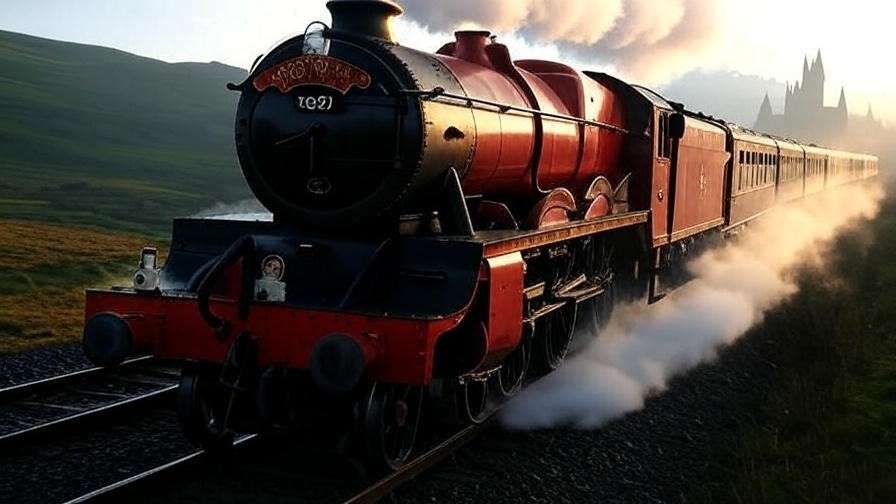
The locomotive’s boiler and pistons work in harmony to drive the train, but enchantments may stabilize its speed and protect it from wear. Fans speculate that the engine’s controls are charmed to respond to magical signals, ensuring a smooth journey to Hogsmeade. This blend of steam power and sorcery makes the locomotive the beating heart of the Hogwarts Express.
The Passenger Carriages
The train’s passenger carriages are where the magic of Hogwarts begins. Each carriage contains compartments designed for student comfort, with plush seats and large windows offering views of the countryside. In the books, these compartments seem to adapt magically, accommodating groups of varying sizes—perhaps through charms similar to the Undetectable Extension Charm. Iconic scenes, like Harry, Ron, and Hermione’s first meeting or Lupin’s Dementor encounter, unfold in these cozy spaces.
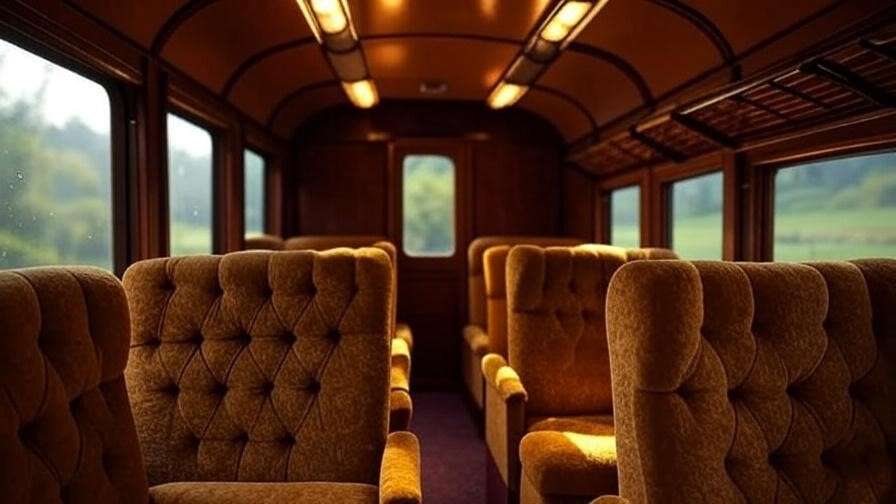
In the films, the carriages draw inspiration from British Pullman-style trains, with wood-paneled interiors and vintage charm. Magical touches, like windows that resist fogging or breaking, enhance the experience. Each carriage is a microcosm of Hogwarts life, fostering friendships and rivalries before students even reach the castle.
The Food Trolley and Its Charms
No Hogwarts Express journey is complete without the Food Trolley, a fan-favorite feature. Piled high with magical sweets like Bertie Bott’s Every Flavor Beans, Cauldron Cakes, and Licorice Wands, the trolley is a highlight for students. The kindly witch who operates it seems to have an endless supply, suggesting a magical restocking system—perhaps a Summoning Charm or a hidden compartment charmed to replenish goods. The trolley glides smoothly through the train, likely guided by a levitation or propulsion spell, ensuring it reaches every compartment without delay.
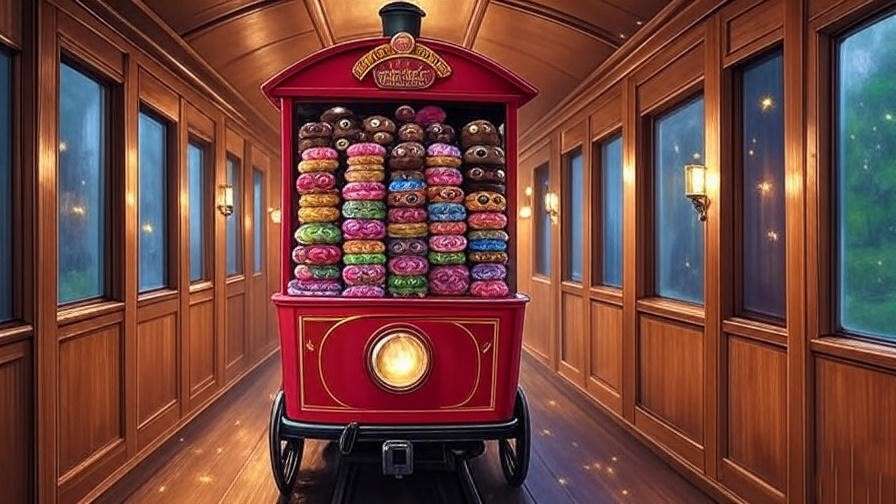
For fans, recreating the Food Trolley for cosplay or events is a popular project. Its whimsical inventory and magical operation make it a standout component of the Hogwarts Express.
The Whistle and Signaling Systems
The Hogwarts Express’s whistle is more than a sound—it’s a call to adventure that echoes through the Scottish hills. In the Harry Potter universe, the whistle likely serves both practical and magical purposes. Mechanically, it signals departures and arrivals, much like Muggle steam trains. Magically, it may act as a beacon, communicating with Hogsmeade Station or even Hogwarts Castle through enchanted frequencies. Fans theorize the whistle could carry protective charms, warding off magical creatures or alerting the school to the train’s approach.
The signaling system is equally intriguing. Muggle trains rely on physical signals, but the Hogwarts Express may use magical markers invisible to non-wizarding eyes. These could include glowing runes along the tracks or spells that guide the train through fog or storms. The seamless coordination between the locomotive and its destination suggests a sophisticated, enchanted system that ensures safe and timely journeys.
The Tracks and Magical Route
The journey from King’s Cross Platform 9¾ to Hogsmeade is one of the most enigmatic aspects of the Hogwarts Express. The route itself is a mystery, as it bypasses Muggle detection despite crossing hundreds of miles. In the books, the train travels through scenic landscapes, including mountains and lochs, but its exact path remains undisclosed. Fans speculate the tracks are enchanted to shift or hide from Muggle view, possibly through a Fidelius Charm or similar magic that conceals magical locations.

The films showcase real-world locations like the Glenfinnan Viaduct, a stunning arched bridge in Scotland, to depict the train’s journey. This viaduct, part of the West Highland Line, adds authenticity to the Hogwarts Express’s aesthetic. In the wizarding world, the tracks might be maintained by spells that prevent rust or derailment, ensuring the train’s reliability for centuries. Understanding this magical infrastructure deepens fans’ appreciation of the train’s role in connecting the Muggle and magical worlds.
Real-World Inspirations Behind the Hogwarts Express
The GWR 4900 Class 5972 Olton Hall
The Hogwarts Express in the Harry Potter films is brought to life by the GWR 4900 Class 5972 Olton Hall, a real steam locomotive built in 1937 by the Great Western Railway. This 4-6-0 engine, designed for express passenger services, was chosen for its classic British aesthetic, perfectly suiting the magical train’s look. With a top speed of around 70 mph and a robust frame, Olton Hall was ideal for filming across rugged Scottish terrain.
For the movies, the locomotive was repainted scarlet and adorned with the “Hogwarts Express” nameplate and crest. Minor modifications, like enhanced smoke effects, added a magical flair. Today, Olton Hall is a star attraction at the Warner Bros. Studio Tour London, where fans can marvel at its engineering and cinematic history. Its blend of historical authenticity and cinematic magic makes it a cornerstone of the Hogwarts Express legacy.
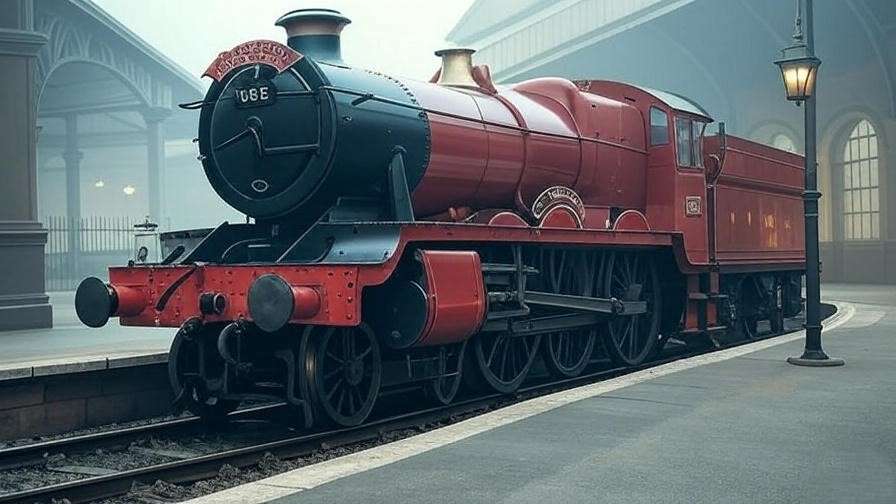
Filming Locations and Set Design
The Hogwarts Express’s cinematic journey owes much to its filming locations and meticulous set design. King’s Cross Station in London, with its hidden Platform 9¾, sets the stage for the train’s departure. The real platform, now a popular tourist spot with a luggage trolley embedded in a wall, captures the magic of transitioning from Muggle to wizarding worlds. The Scottish Highlands, particularly the Glenfinnan Viaduct, provide breathtaking backdrops for the train’s journey, with sweeping shots of the scarlet engine winding through green valleys.
Inside, the passenger carriages were crafted as detailed sets by Warner Bros. production designers. Drawing from British Pullman trains, the sets feature wood-paneled walls, cushioned seats, and vintage luggage racks, evoking a nostalgic yet magical atmosphere. Attention to detail, like the Food Trolley’s candy-strewn shelves, ensures authenticity. Production insights from designers like Stuart Craig reveal how they balanced historical accuracy with Rowling’s vision, creating a train that feels both timeless and enchanted.
Comparing Magical and Muggle Trains
While the Hogwarts Express draws heavily from Muggle steam trains, its magical enhancements set it apart. Muggle trains like Olton Hall rely on coal, water, and human crews, whereas the Hogwarts Express likely uses enchanted fuel and autonomous systems. The magical train’s ability to navigate a hidden route contrasts with Muggle trains’ fixed tracks. Yet, both share similarities: steam power, passenger-focused design, and a sense of grandeur.
J.K. Rowling’s genius lies in blending these elements. By rooting the Hogwarts Express in real-world engineering, she makes its magic feel plausible. For fans, comparing the two highlights the ingenuity of wizarding technology, making the train a bridge between the familiar and the fantastical.
Building Your Own Hogwarts Express: Tips for Fans and Modelers
Model Kits and Replicas
For fans eager to bring the Hogwarts Express to life, model kits offer a tangible connection to the wizarding world. Popular options include the LEGO Hogwarts Express (set 75955), which captures the train’s scarlet livery and detailed carriages, and Hornby’s HO/OO scale models, designed for train enthusiasts. These kits vary in complexity, from beginner-friendly builds to intricate replicas for collectors.
To enhance authenticity, modelers can add magical touches. Painting the locomotive with metallic red paint or adding decals like the Hogwarts crest elevates the design. For advanced builders, incorporating LED lights to mimic the train’s headlamp or steam effects can simulate its magical aura. Online communities, like those on Reddit or model train forums, share tips for customizing kits to reflect the train’s enchanted nature.
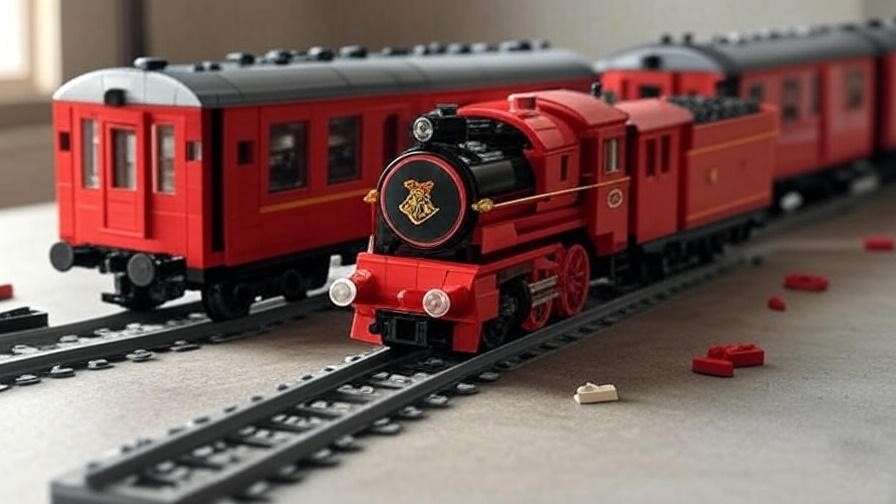
Cosplay and Prop Design
The Hogwarts Express inspires stunning cosplay and prop projects. Fans can recreate the Food Trolley witch’s outfit, complete with a tray of magical sweets, using fabrics like vintage lace for authenticity. Building a miniature Food Trolley prop involves crafting a wooden or foam cart, stocked with replica candies like Chocolate Frog boxes (available from craft stores or 3D printers). For larger projects, cosplayers might construct a Platform 9¾ sign or a partial carriage set for conventions.
Materials like EVA foam, wood, and resin work well for props, while paint techniques can mimic aged metal or polished wood. Tutorials on YouTube or fan sites like MuggleNet offer step-by-step guides, ensuring even beginners can create impressive replicas.
Visiting the Real Hogwarts Express
For an immersive experience, fans can visit the Hogwarts Express in person. The Warner Bros. Studio Tour London – The Making of Harry Potter features the actual Olton Hall locomotive and a recreated Platform 9¾. Visitors can walk through a carriage set, complete with compartments from the films, and explore behind-the-scenes exhibits on the train’s design. The Universal Orlando Resort’s Wizarding World of Harry Potter offers a rideable Hogwarts Express, connecting Diagon Alley and Hogsmeade, with interactive windows showcasing magical scenes.
Booking tickets in advance and checking seasonal events, like Hogwarts in the Snow, enhances the experience. These attractions bring the train’s magic to life, making them must-visit destinations for Potterheads.
Fun Facts and Lesser-Known Details
The Hogwarts Express is packed with enchanting trivia that delights fans and deepens its mystique. Did you know the train’s real-world counterpart, the GWR 5972 Olton Hall, was built in Swindon, England, and served on British railways before its cinematic fame? In the films, its steam was enhanced with special effects to create a magical, billowing plume. J.K. Rowling revealed on Pottermore that the train’s creation involved covert collaboration between the Ministry of Magic and Muggle engineers, ensuring its seamless integration into the wizarding world.
Another gem: the train’s capacity is never explicitly stated, but fans estimate it carries hundreds of students, likely thanks to magical expansion charms. The Glenfinnan Viaduct, featured in Chamber of Secrets, is a UNESCO World Heritage candidate, adding historical weight to its cinematic role. Fan theories also abound—some speculate the train’s route passes through a magical dimension, explaining its invisibility to Muggles. These tidbits, drawn from Rowling’s writings and fan discussions, make the Hogwarts Express a treasure trove of lore.
Why the Hogwarts Express Matters to Fans
The Hogwarts Express is more than a train; it’s a symbol of transition, marking the shift from the ordinary to the extraordinary. For Harry, Ron, and Hermione, it’s where their friendship began, setting the stage for their adventures. For fans, it represents the thrill of entering the wizarding world, evoking nostalgia for first encounters with the series. Its scarlet silhouette and rhythmic chug are etched in the collective imagination of Potterheads worldwide.
In fan communities, the train inspires art, fanfiction, and cosplay. On platforms like X, fans share detailed sketches of the locomotive or stories imagining new journeys. Its role in the series—bridging Muggle and magical realms—mirrors its impact on readers, uniting diverse audiences through shared wonder. Understanding the Hogwarts Express parts, from its enchanted boiler to its cozy carriages, deepens this connection, offering fans a way to engage with the series’ world-building on a profound level.
FAQs About the Hogwarts Express Parts
What type of locomotive is the Hogwarts Express based on?
The Hogwarts Express is modeled on the GWR 4900 Class 5972 Olton Hall, a 4-6-0 steam locomotive built in 1937. In the films, it was repainted scarlet and fitted with a Hogwarts crest, blending Muggle engineering with wizarding aesthetics.
Are there any magical parts unique to the Hogwarts Express?
While the books don’t specify, fans theorize the train features enchanted components like a self-sustaining firebox, autonomous navigation spells, and expansion charms in the carriages to accommodate students. These elements distinguish it from Muggle trains.
How can I build a realistic Hogwarts Express model?
Start with kits like LEGO’s Hogwarts Express or Hornby’s scale models. Customize with metallic paints, decals, and LED lights for a magical effect. Online tutorials and forums offer tips for adding authentic details, like the train’s crest or steam effects.
Where can I see the Hogwarts Express in real life?
Visit the Warner Bros. Studio Tour London to see the Olton Hall locomotive and a Platform 9¾ set. Universal Orlando’s Wizarding World of Harry Potter offers a rideable Hogwarts Express. Check official websites for tickets and special events.
Does the Hogwarts Express have a driver?
No driver is mentioned in the books or films, suggesting magical automation. Theories propose the train is guided by spells or a charmed system, ensuring safe travel from King’s Cross to Hogsmeade.
The Hogwarts Express is a masterpiece of magical engineering, blending Muggle steam technology with wizarding enchantments. From its powerful locomotive and adaptable carriages to its charmed Food Trolley and mysterious route, every part tells a story of innovation and wonder. For fans, exploring these components—whether through reading, model-building, or visiting real-world exhibits—deepens their connection to the Harry Potter universe. The train’s real-world roots, like the GWR Olton Hall and Glenfinnan Viaduct, ground its magic in tangible history, making it a bridge between worlds.
Whether you’re a modeler crafting a replica, a cosplayer designing a Food Trolley prop, or a fan reliving Harry’s first journey, the Hogwarts Express invites you to embark on your own adventure. Share your favorite train moments in the comments or on social media, and let the magic of the scarlet steam engine inspire your next Hogwarts journey.

